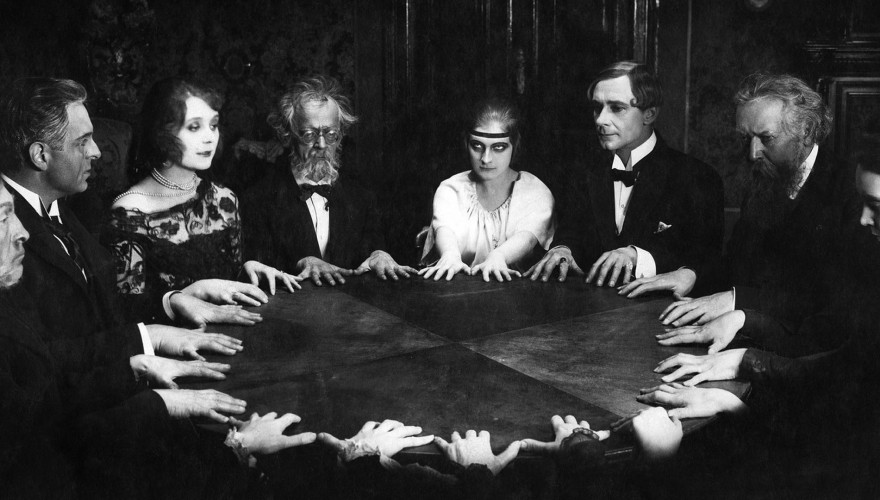Hi-Tech Grief: HSE Researchers Explore the Pros and Cons of Digital Commemoration

Researchers at HSE University in Nizhny Novgorod have explored how technological advancements are transforming the ways in which people preserve the memory of the deceased and significant events. Digital technologies enable the creation of virtual memorials, the preservation of personal stories and belongings of the deceased, interaction with their digital footprint, and even the development of interactive avatars based on their online activity. However, these technologies not only evoke nostalgia and provide a sense of relief but can also heighten anxiety and fear, and delay the process of accepting loss. The study has been published in Chelovek (The Human Being).
The desire to commemorate significant people, events, and traditions has existed throughout human history. Architecture, religious rituals, family legends, and genealogical records are all examples of how we strive to preserve memory. This desire becomes especially significant when people confront the finiteness of life. Anxiety, fear, and grief drive us to ensure that we leave a mark, enabling others to reconstruct the images of those who are no longer around.
Historically, people have preserved the memory of the departed through texts such as obituaries, diaries, or vital records. Today, technology provides far more possibilities, including multimodal formats such as photos, videos, and audio, as well as virtual cemeteries, online memorial platforms, and even digital replicas of the deceased.
'We are at a fascinating juncture where one of the oldest rituals in human culture—funeral rites—is undergoing change. The shift from analogue to digital memory is shaping new approaches to commemoration. Thousands of people tune in to watch live broadcasts of the funerals of active internet users,' notes Timur Khusyainov, Deputy Dean of the Faculty of Humanities at the HSE Campus in Nizhny Novgorod.
According to the researchers, this transition to virtual space makes the topic of death less taboo and significantly broadens the number of mourners. New forms of grieving are emerging on social media, including virtual funerals, memorial posts, and the creation of online communities to honour the deceased, whose personal pages transform into memorial sites. According to some estimates, by 2060, Facebook (a banned organisation in the Russian Federation) may have more pages of deceased users than of living ones. However, this publicity alters the perception of death itself: once in the digital space, it becomes ubiquitous, commonplace, and loses its individual significance, distancing itself from the lived experience.
The deceased begin to exist in virtual space, continuing to 'live' through their digital footprints—not only the content they consciously created but also a vast array of other interactions, such as fitness tracker data, search history, and even the log of connections to a router.
The authors emphasise how the digitalisation of death is increasingly featured in popular culture. Films and television series, such as Black Mirror and Cybervillage (Кибердеревня), explore how digital technologies influence the memory of the departed and their role in modern life. This illustrates how much society cares about the topic and seeks to incorporate related developments into the context of daily life, bridging the possible and the real.

The collection and handling of digital footprints have also become an issue. After a person's death, their data—including correspondence, photos, social media posts, and device information—remains in the digital space. This raises a variety of ethical and legal concerns. For example, the EU General Data Protection Regulation (GDPR) protects the personal data of deceased individuals for 30 years after their death, but this regulation is fragmented. Legislation has been enacted in the USA to regulate access to digital heritage through online wills and powers of attorney.
Despite these measures, the issue persists. In some cases, platforms have become de facto owners of the data, allowing them to handle digital footprints at their discretion. This can result in information leakage, manipulation, and the creation of digital avatars without the consent of relatives or the will of the deceased. AI-powered chatbots enable the creation of digital avatars of deceased individuals, which, based on vast amounts of data, can virtually 'revive' a person, recreating their voice, speech patterns, and even habits.
According to the researchers, digital avatars of the deceased can be likened to the monster brought to life by Dr Frankenstein: an image constructed from digital footprints and artificially animated in virtual space. On one hand, it is powerful and human-like, but upon closer inspection, its flaws become apparent—errors occur when generating images, and language models often produce false information.
'A machine can be imbued with otherworldly qualities, giving rise to the myth of resurrection and immortality. Technologies serve as modern-day “spirit mediums,” similar to those used in Victorian-era séances, allowing us to interact with those "risen from the dead," whose number is growing,' Khusyainov notes.
'An important aspect of digital "resurrection" is its impact on the emotional experience of the living in relation to death and dying. On one hand, interacting with digital footprints helps people in their grieving process by fostering a sense of continued connection with the deceased. On the other hand, technologies can also hinder the process of accepting loss. Instead of confronting the finiteness of life, a person becomes immersed in the illusion of communicating with a digital "doppelgänger," which increases anxiety and the risk of retraumatisation,’ explains Ekaterina Urusova, co-author of the article, visiting lecturer at the HSE Campus in Nizhny Novgorod, and existential-humanistic psychotherapist.
Ekaterina Urusova



